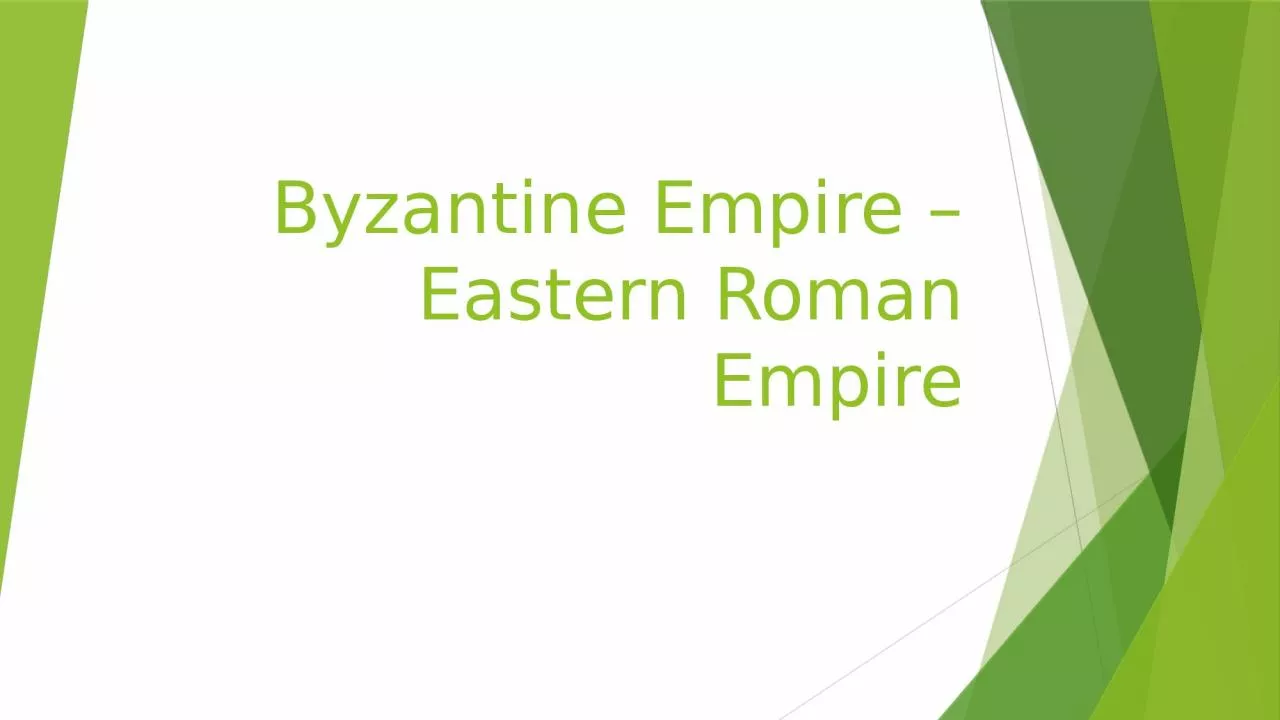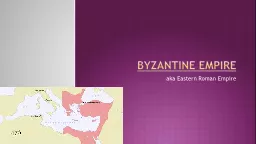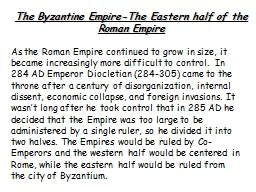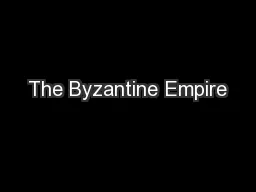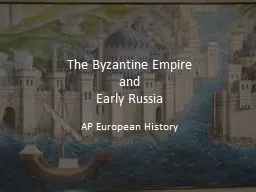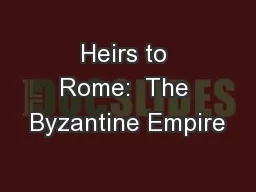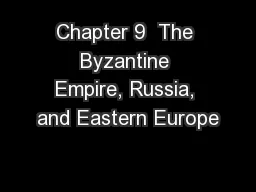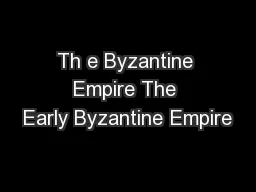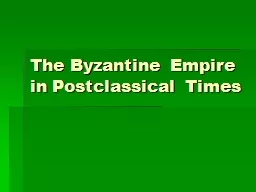PPT-Byzantine Empire – Eastern Roman Empire
Author : mia | Published Date : 2022-06-20
Byzantine Empire 330 CE1453 CE The Eastern Empire split from Rome after 330 CE and continued under Greek rule While the West fell in 485 CE the East continued
Presentation Embed Code
Download Presentation
Download Presentation The PPT/PDF document "Byzantine Empire – Eastern Roman Empir..." is the property of its rightful owner. Permission is granted to download and print the materials on this website for personal, non-commercial use only, and to display it on your personal computer provided you do not modify the materials and that you retain all copyright notices contained in the materials. By downloading content from our website, you accept the terms of this agreement.
Byzantine Empire – Eastern Roman Empire: Transcript
Download Rules Of Document
"Byzantine Empire – Eastern Roman Empire"The content belongs to its owner. You may download and print it for personal use, without modification, and keep all copyright notices. By downloading, you agree to these terms.
Related Documents

